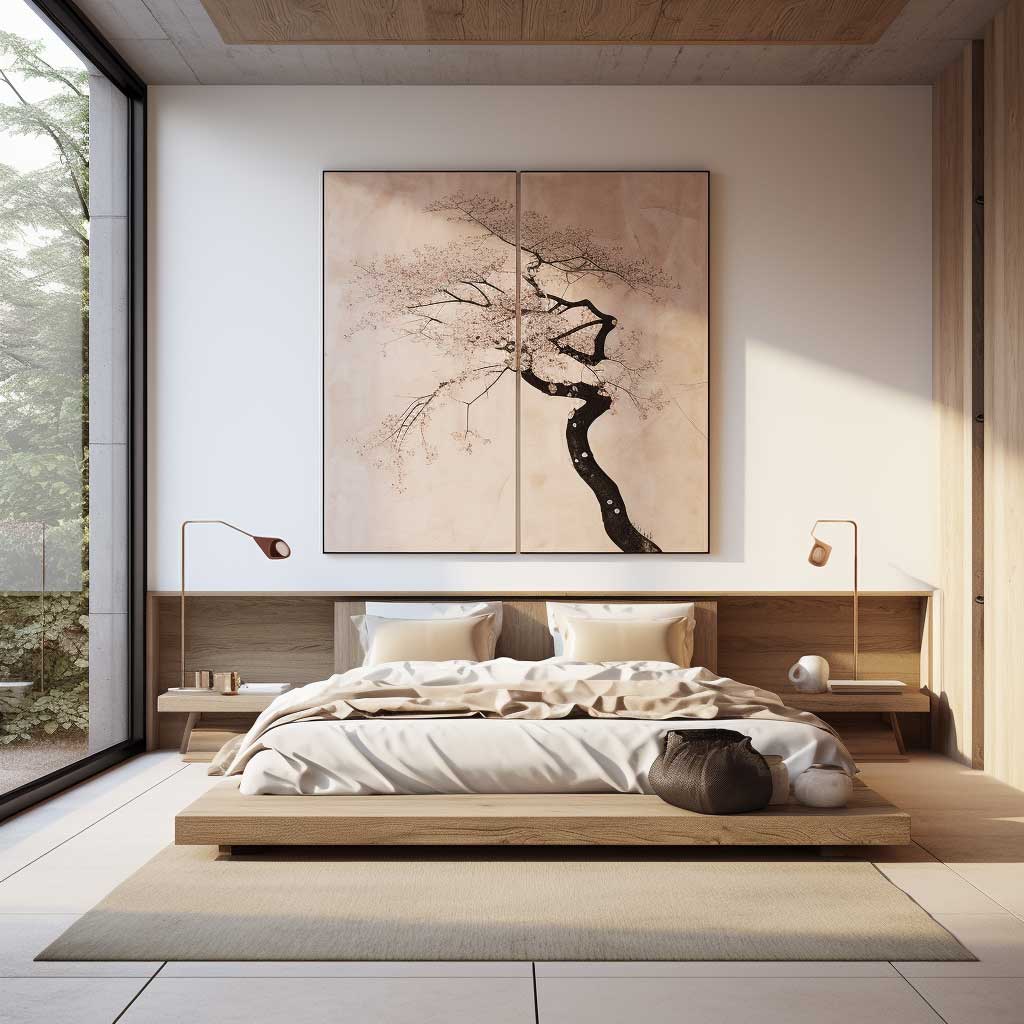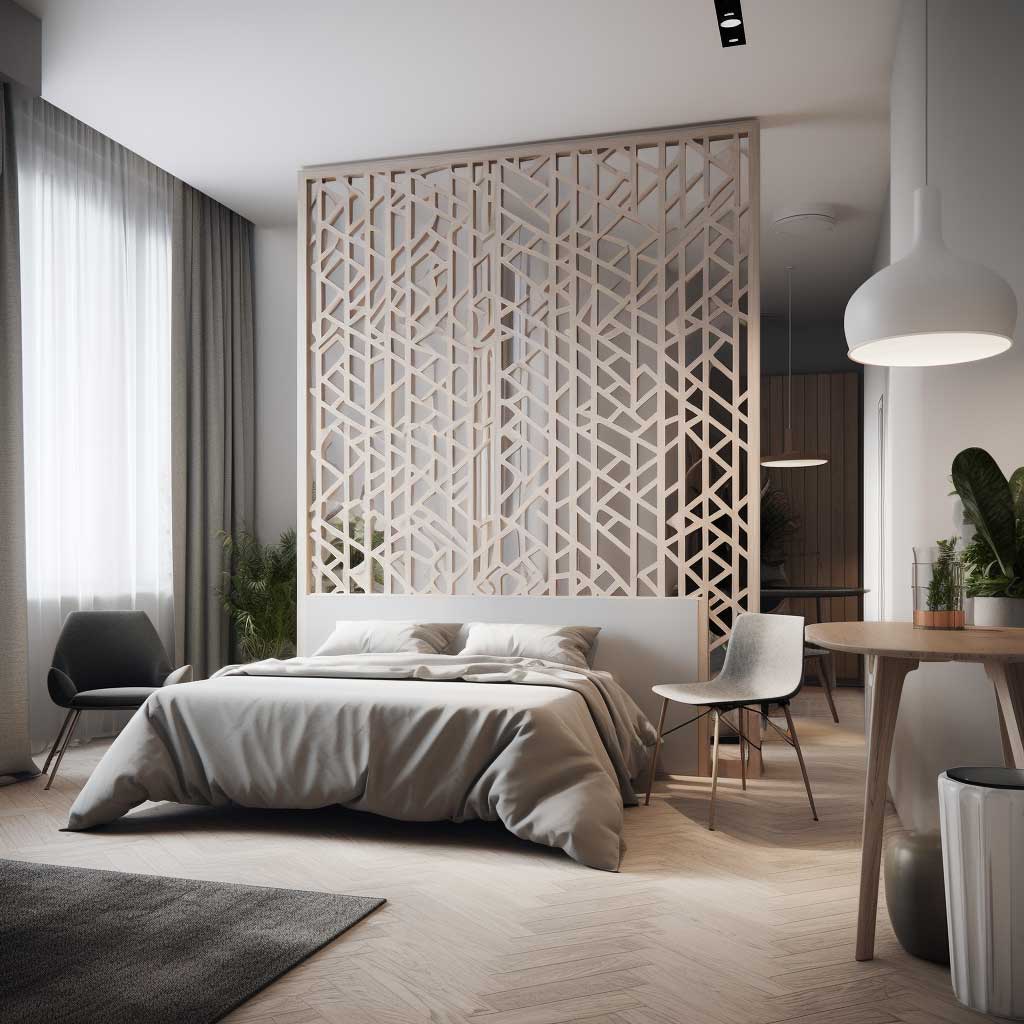In a world that often prioritizes perfection and mass-produced uniformity, the Wabi Sabi style of home design offers a refreshing perspective. Rooted in ancient Japanese philosophy, Wabi Sabi celebrates the beauty of the imperfect, the transient, and the natural. It embraces simplicity, authenticity, and mindfulness, inviting us to create living spaces that are serene, minimalistic, and profoundly personal. In this article, we’ll explore the key elements of a Wabi Sabi style home, providing you with a wealth of inspiration to incorporate this unique aesthetic into your own living spaces.
Embracing Imperfection with Wabi Sabi Style Home

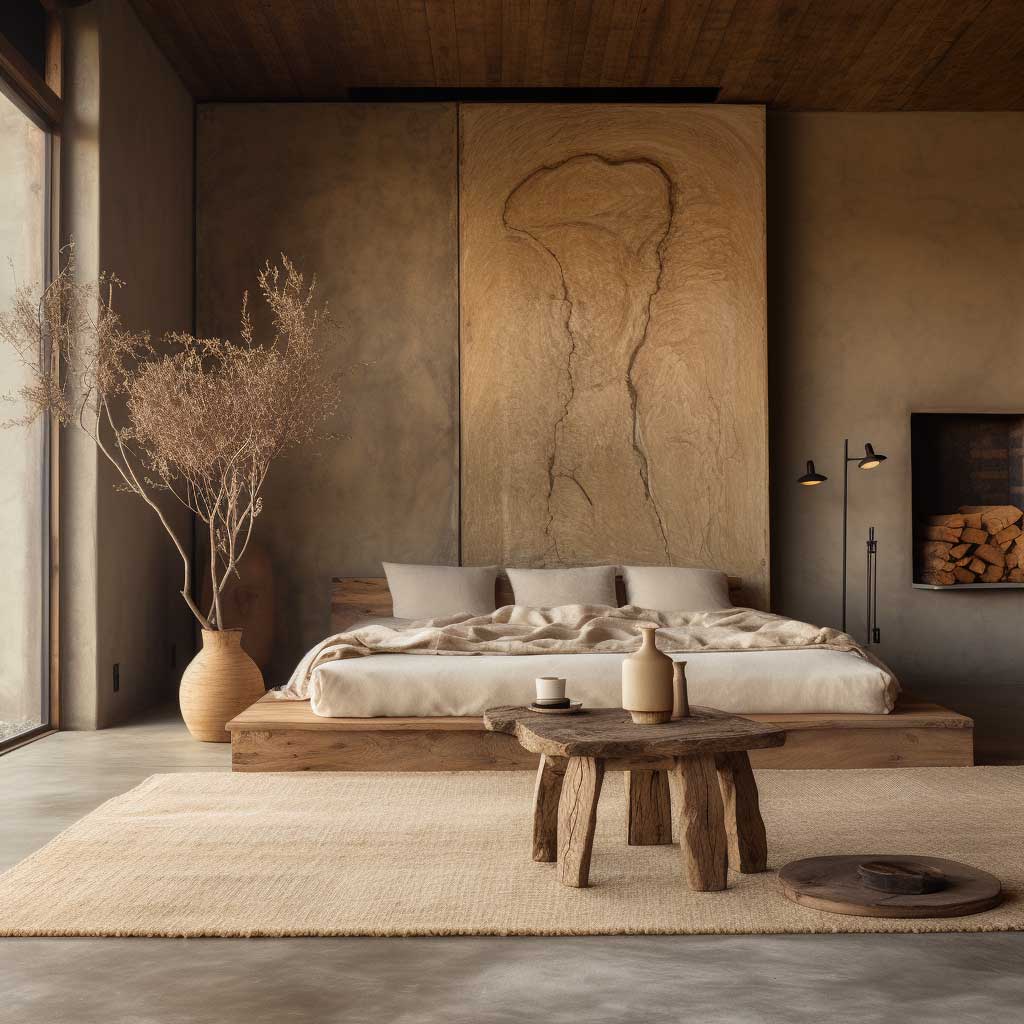
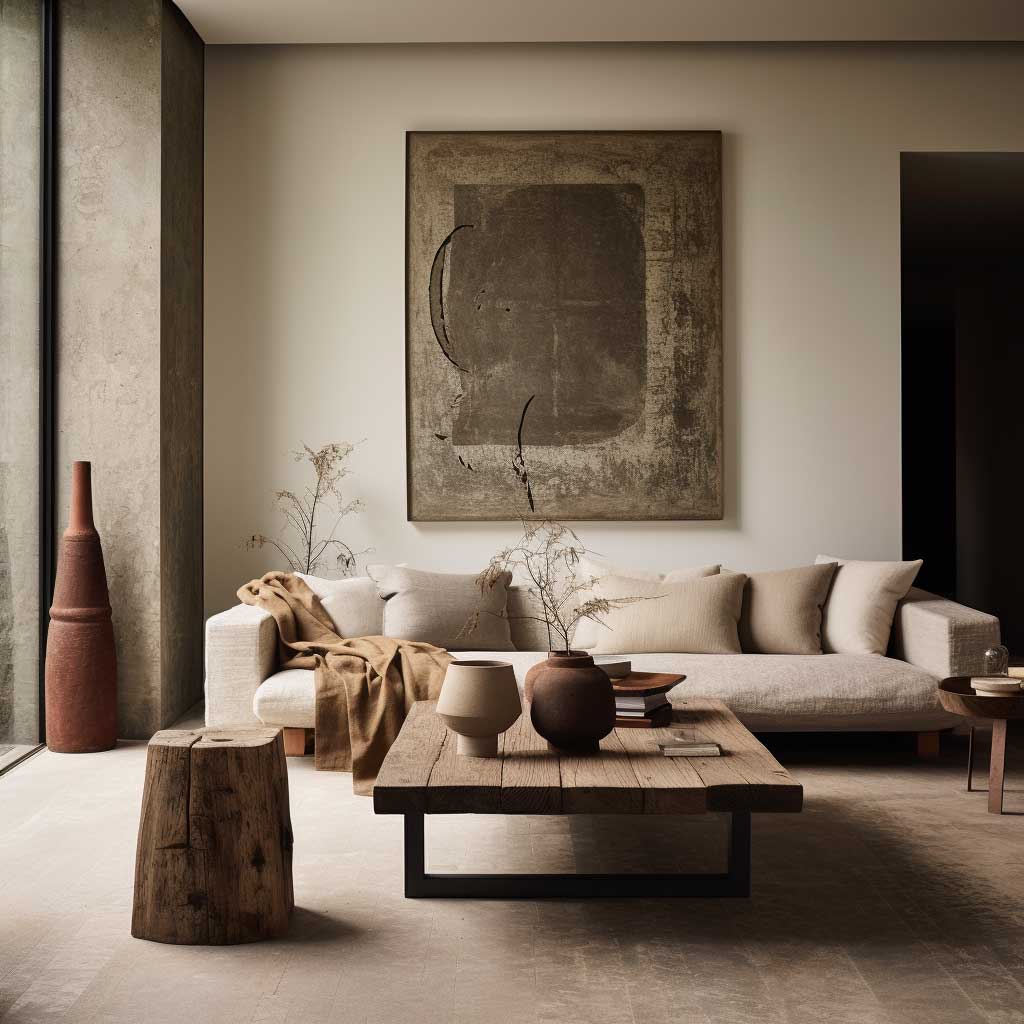
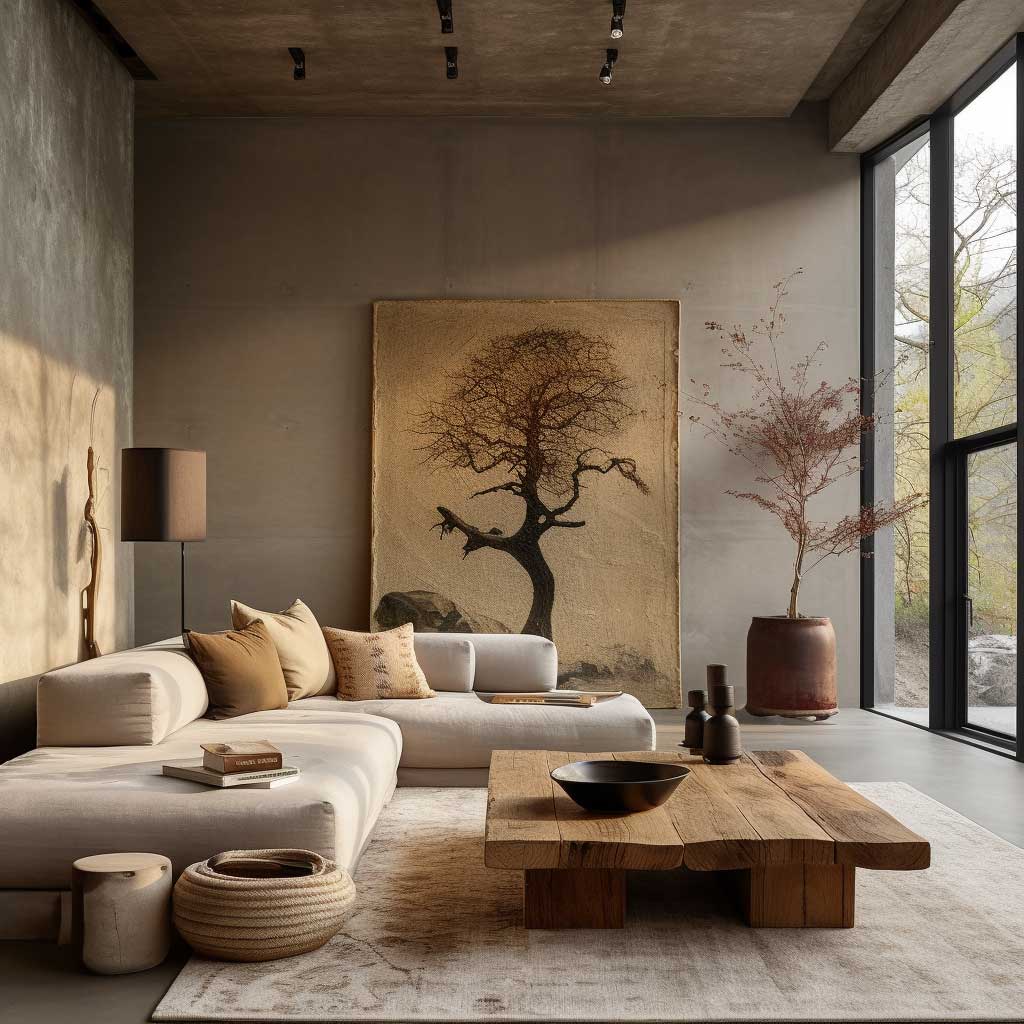
This image captures the true essence of the Wabi Sabi style home – a celebration of the imperfect, transient, and incomplete. The room featured in the photo is an amalgamation of different natural textures, from the rough wooden floors to the irregular plaster walls. The textures aren’t smooth or polished, they’re raw and authentic, bearing the beautiful scars of time and use.
The color scheme of the room adheres to the Wabi Sabi philosophy as well. Muted, earthy tones dominate the space, embodying a sense of serenity and grounding. These colors mimic those found in nature, further emphasizing the connection between the interior and the natural world. The absence of bright, artificial colors invites an atmosphere of peace and tranquility.
The furniture in the room is simple and unpretentious, devoid of unnecessary ornamentation. Each piece serves a purpose, true to the Japanese principle of avoiding waste. The forms are irregular, and the materials show signs of age – a testament to the Wabi Sabi philosophy of finding beauty in impermanence and decay.
The room isn’t filled with objects, instead, there is a balance between emptiness and elements. This speaks to the Wabi Sabi principle of “Ma” or negative space. It’s a concept that honors the emptiness as much as the objects, believing that the space between things is just as important as the things themselves.
Natural light plays a crucial role in this Wabi Sabi styled room. It floods in through the windows, highlighting the textures and imperfections of the surfaces. The interplay of light and shadow adds depth to the room, creating a dynamic visual experience.
Overall, this room embodies the Wabi Sabi concept, offering a sanctuary from the polished, perfect homes that are often showcased in modern interior design. It invites you to embrace imperfections, to find beauty in the natural and the transient, and to create a home that feels genuinely yours.
Serenity in the Heart of a Wabi Sabi Style Home




The image showcases a living area designed with the Wabi Sabi philosophy at its core. It’s a space that breathes tranquility and calmness, embodying a sense of quiet elegance and simplicity. The room is sparse, adhering to the Wabi Sabi principle of ‘less is more.’ This allows for each item within the space to hold significance, to tell its own story.
The furniture pieces are minimal, with signs of wear and use, displaying the Wabi Sabi appreciation for the passage of time and the beauty of age. The wooden table, for example, has a weathered texture that exhibits a sense of history and character. The natural elements present, like the houseplants, play an essential role in establishing a connection with nature, a significant aspect of the Wabi Sabi philosophy.
The room employs a calming neutral palette. It refrains from using bright, harsh colors, favoring tones that mimic those in nature – earthy browns, soft grays, and creams. These colors not only instill a sense of tranquility but also highlight the room’s natural textures and materials.
The incorporation of traditional Japanese Shoji screens adds an element of authenticity to the space. Made from translucent paper and wood, these screens allow for a gentle diffusion of light, adding depth and creating an interplay of shadows that brings dynamism to the space.
In terms of lighting, the room uses both natural light and soft artificial lighting. The use of natural light is crucial to the Wabi Sabi aesthetic, as it brings out the beauty of the natural textures and materials used in the room. The artificial lighting is gentle and warm, creating an inviting ambiance that enhances the overall serenity of the space.
This room is a testament to the Wabi Sabi aesthetic’s ability to create peaceful, serene spaces that promote mindfulness and reflect the natural world’s beauty. It invites you to slow down, to appreciate the simple things in life, and to find joy in the imperfections and transience that define our existence.
Timeless Aesthetics of a Wabi Sabi Style Home
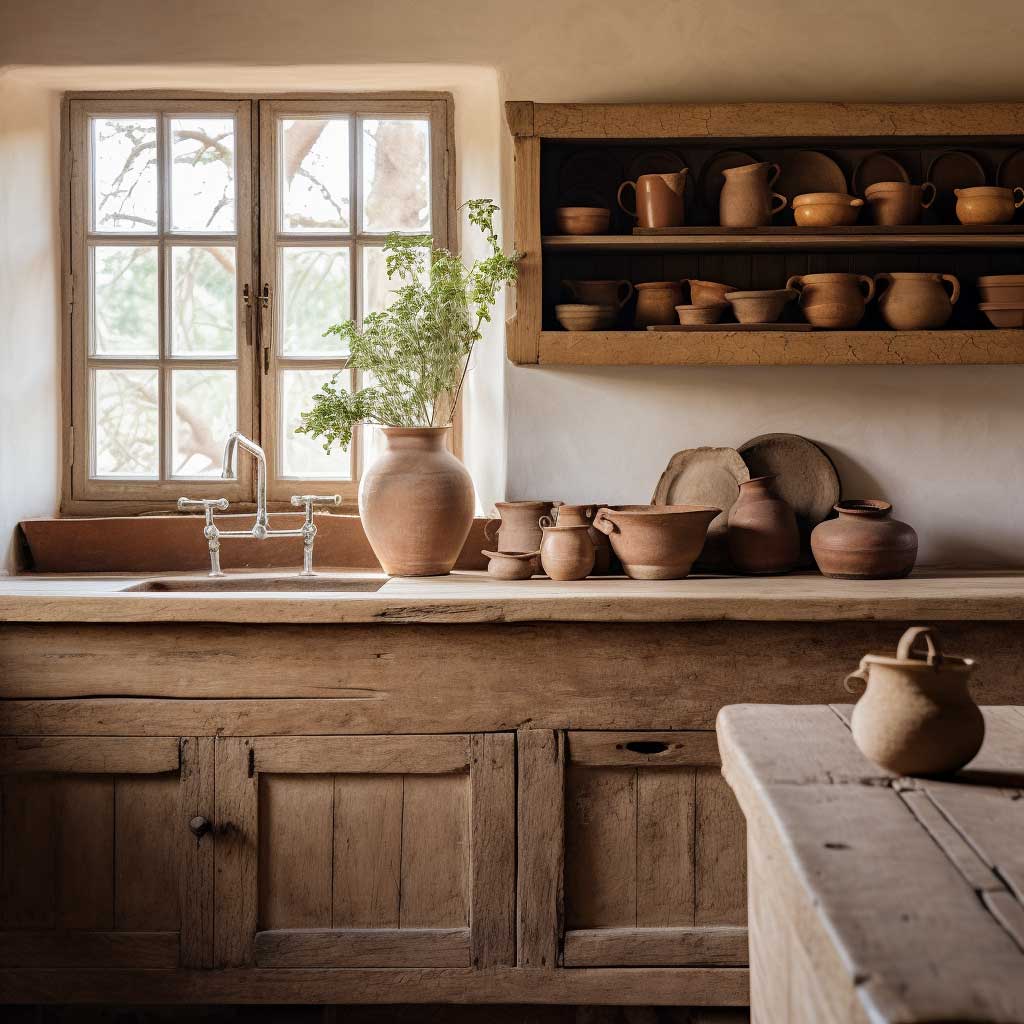



The image features a kitchen designed with the Wabi Sabi philosophy in mind. Every aspect of this space, from the rustic wooden cabinets to the handmade pottery, exudes a sense of authenticity and warmth. It’s a kitchen that tells a story, that has been lived in, loved, and aged gracefully over time.
The wooden cabinets dominate the space, their aged patina reflecting the Wabi Sabi’s love for the old and worn. These cabinets are not perfect; they bear the marks of time and use. Yet, it’s in these imperfections that their true beauty lies. They speak to the value of natural materials and the beauty of the aging process.
The kitchen countertop features handmade pottery, another nod to the Wabi Sabi aesthetic. Each piece is unique, bearing the marks of its creator. It’s an appreciation of the handmade over the mass-produced, of the irregular over the uniform. This pottery not only serves a practical purpose but also adds an artistic touch to the kitchen.
In line with the Wabi Sabi philosophy, the kitchen embraces a neutral color palette. The warm tones of the wood, paired with the whites and greys of the pottery and walls, create an atmosphere of tranquility and simplicity. It’s a space that invites calm and mindfulness, encouraging you to take the time to enjoy the simple act of cooking and eating.
Natural light plays a significant role in this kitchen design, streaming in through the windows to illuminate the space. It highlights the textures and colors of the room, enhancing their natural beauty. It also creates a warm, inviting ambiance, making the kitchen a space where one would want to spend time.
Overall, this kitchen is a beautiful interpretation of the Wabi Sabi aesthetic. It’s a space that pays tribute to the beauty of age and imperfection, promoting a way of life that values simplicity, authenticity, and the natural world.
Conclusion: Embracing the Wabi Sabi style in your home is about much more than just design aesthetics. It’s about adopting a philosophy that values the beauty of the natural and the imperfect, that encourages mindfulness, and that cherishes the passage of time. As we’ve seen in the various examples provided, a Wabi Sabi style home promotes serenity, authenticity, and a profound connection with the natural world. By incorporating the principles of Wabi Sabi into your home, you invite in tranquility, mindful living, and a unique sense of beauty that celebrates the imperfections and transience of life.

